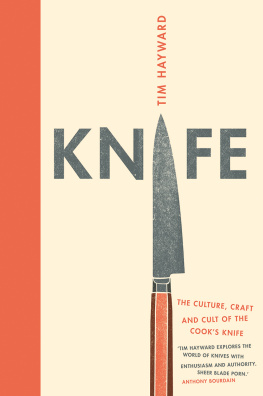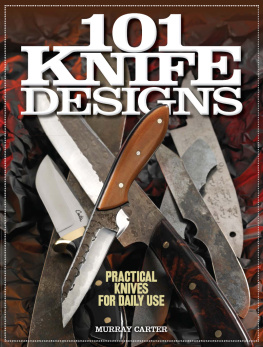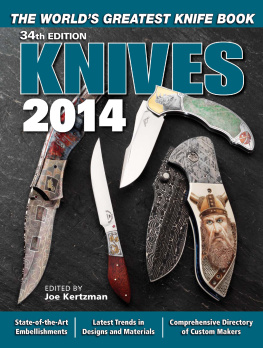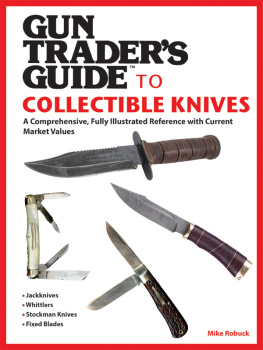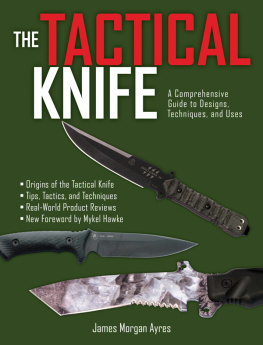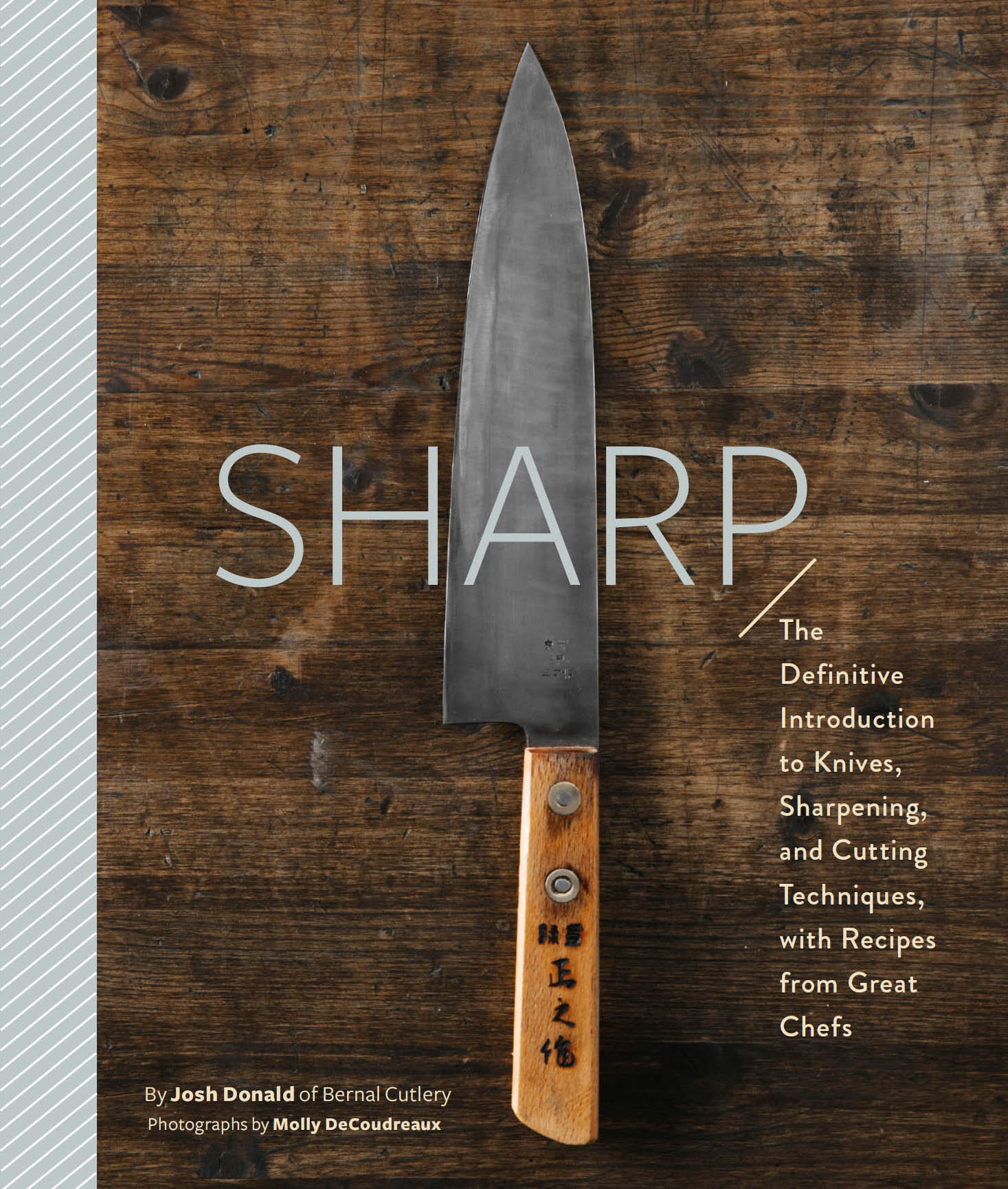
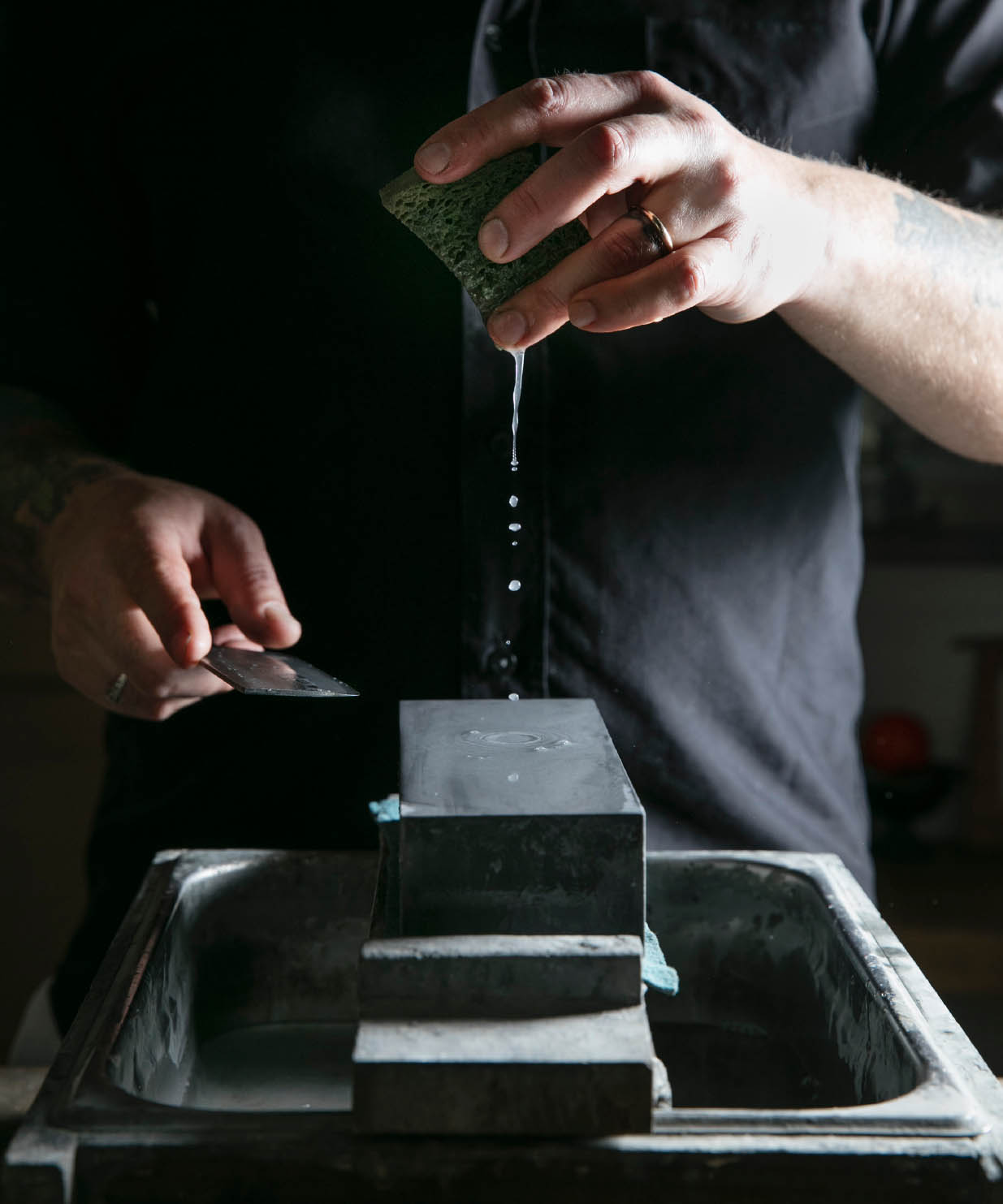
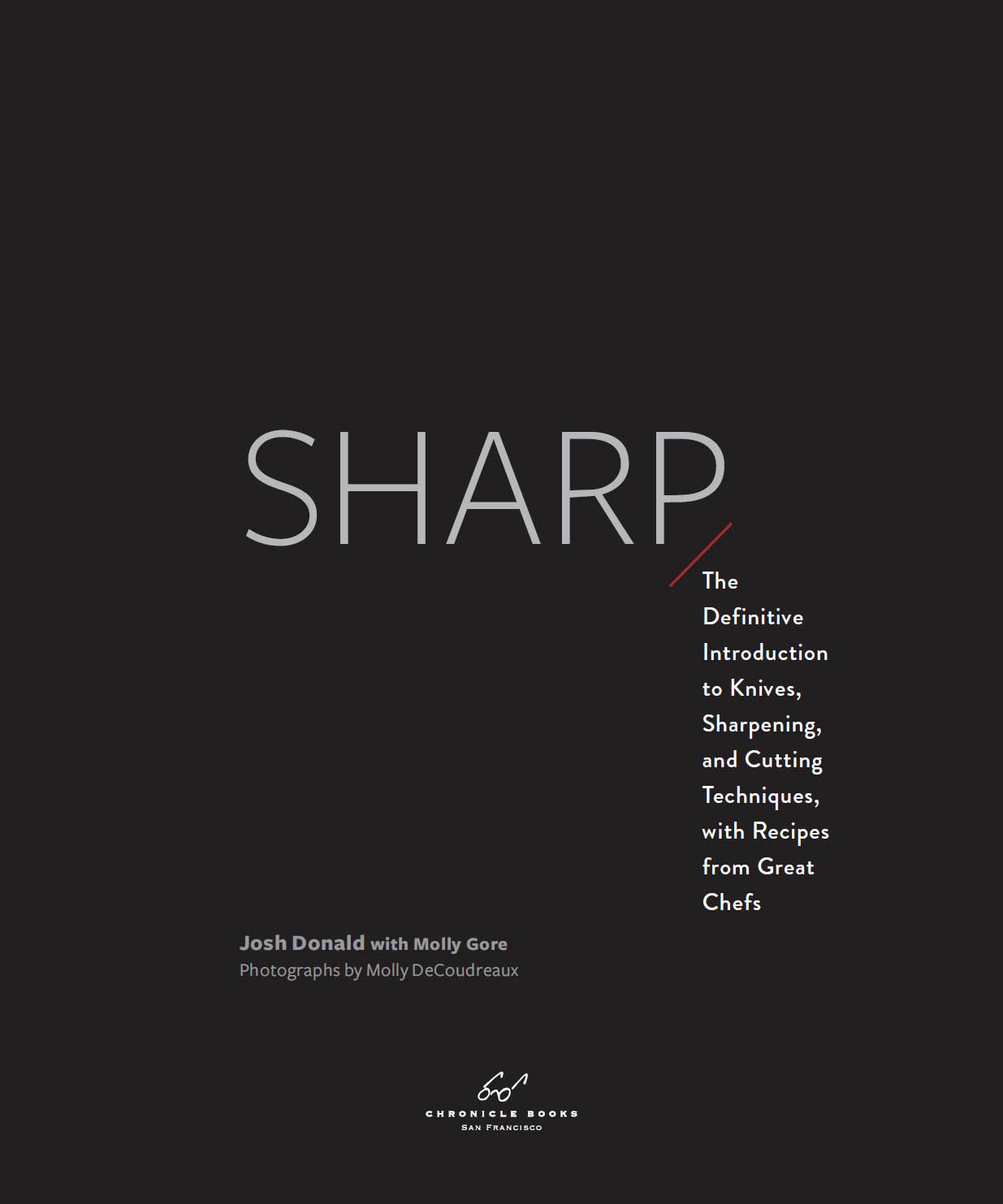
Text copyright 2018 by Josh Donald.
Photographs copyright 2018 by Molly DeCoudreaux.
All rights reserved. No part of this book may be reproduced in any form without written permission from the publisher.
ISBN 9781452163215 (epub, mobi)
Library of Congress Cataloging-in-Publication Data
Names: Donald, Josh, author.
Title: Sharp / by Josh Donald.
Description: San Francisco : Chronicle Books, 2018.
Identifiers: LCCN 2017022740 | ISBN 9781452163062 (hc : alk. paper)
Subjects: LCSH: Knives. | Cutting.
Classification: LCC TS380 .D675 2018 | DDC 621.9/32dc23 LC record available at https://lccn.loc.gov/2017022740
Designed by Toni Tojima and Vanessa Dina
Typesetting by Frank Brayton
Chronicle books and gifts are available at special quantity discounts to corporations, professional associations, literacy programs, and other organizations. For details and discount information, please contact our premiums department at or at 1-800-759-0190.
Chronicle Books LLC
680 Second Street
San Francisco, California 94107
www.chroniclebooks.com
There are so many people who have helped to create this book, whove supported our mission at Bernal Cutlery and who make me love the business Im in. They include:
Kelly Kozak, who refuses to let me be a pessimist and has my back always. The staff at Bernal Cutlery, who not only contributed to this book but kept the gears turning and without whom I would have been checking in orders and sharpening knives instead of writing this. Molly DeCoudreaux, who has always given a fresh perspective on what we do through her steely eye and steady lens. Consigliere Liam Passmore, who introduced me to Danielle Svetcov, who has been a fountain of sage advice and advocacy. Molly Gore, whose literary skills and hard work shaped and honed my rough-forged run-ons into a fluid, readable form. Chronicle Books, for giving us a chance and creative license. All the cooks in SF who contributed their knife skills and recipes; we wish we couldve fit everyone in!
All those in Japan who were so generous with their time: Ashi-san at Ashi Hamono, who helped us take a deeper look into the history of the gyuto and the roots of modern Japanese knife making. Kawamura-san, Yoshida-san, Koda-san, and the good people at Sakai Kikumori Kawamura Hamono who introduced us to their network of craftspeople, for a deeper look into traditional knife making in Sakai. In Kyoto, Dobayashisan of Maruoyama mine, who welcomed us into his shop Totoriya and climbed the steep hills of Kameoka with us for a tour. Manfred and Sachiko Ikeda, who introduced us to the amazing artisans of Tsubame-Sanjo and helped organize the Niigata end of our travels. Iwasaki-san and Mizuochi-san, gracious hosts who shared a deeper context and understanding of traditional smithing and sharpening. Tsukasa Hinourasan, who took time out of his busy schedule to share his knowledge and perspective on knife making and the inner workings of traditional Japanese blacksmithing. Mutsumi Hinoura-san, who also generously shared his experience. Yamamoto-san of Yoshikane, who brought us through their unique production process and gave us a new look at knife making. Wakui-san, who was also very generous with his time and techniques. In Europe, a big thank you to Giselheid Herder-Scholz, who was invaluable in making sure our Solingen research was thorough and blew my mind with his family collection of Windmuhlenmesser knives. In France, an enormous thank you to the Bournilhas Family: Alain, Philippe, and Christine, amazing hosts who shared the hidden world of Thiers, the rich history of K Sabatier, including massive ledger books, and their collection of knives.
Finally Shihan Prull, who generously took me through all the mechanics of forging and heat treating and enriched my understanding of knife making.
Contents
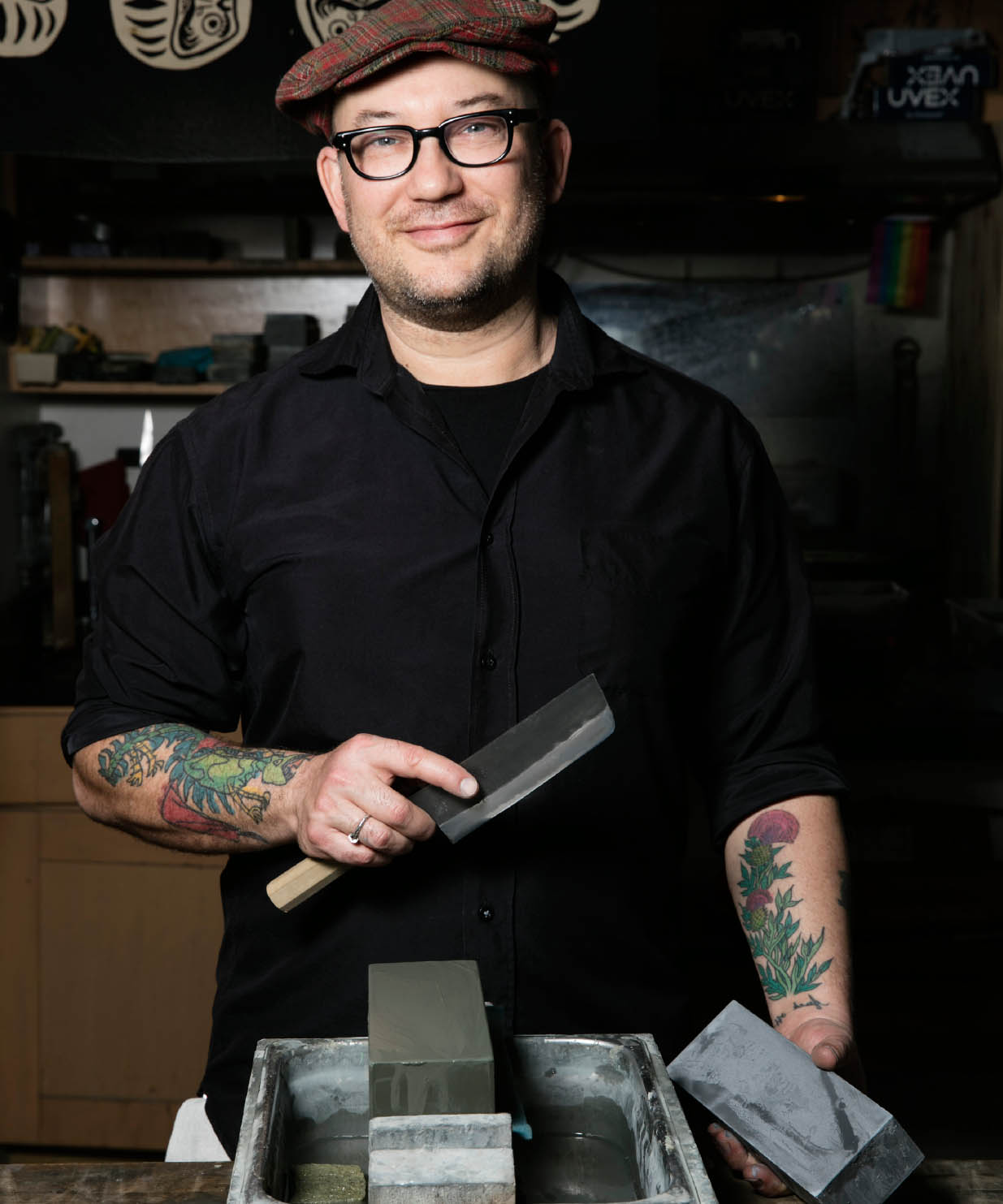
Introduction

In this book, youll learn about knives from the West and Japan and from the moments in time when those worlds crashed and then melted into each other. These are the knives youll find in most professional kitchens and, chances are, in your own kitchen, too. Youll learn to look at a knife and see right to its material rootsfrom the ore to the furnace to the polishing wheeland beyond them to the story behind its footprint and the way it feels when you cut with it.
This book holds what I now know after ten years of jumping down rabbit holes and tracing everything we sell at Bernal Cutlery to its origin. Along the way, I learned how to work a Japanese whetstone (first badly, then well) and how a sharp edge and cutting angle affect the flavor of food. I found out how Commodore Perrys gunboats opened the door for the arrival of beef to Japan, and how single-celled organisms that fell to the seafloor of Pangaea hundreds of millions of years ago can turn an onion to butter under the edge of a Japanese steel knife. In France, Germany, and Japan, in the forges and small workshops where our favorite knives are made, I saw how finishing a blade by hand against a grinding wheel really makes it sing on the cutting board.
Youll find all of that in these pages, as well as a practical guide to putting knives to use with techniques and recipes. In , the focus turns to Japan, to the ancient furnace, black iron sands, and prehistoric mud that drove Japanese knife making for centuries, and to the craftspeople who keep that legacy intact today.
The second half of the book is devoted to content that helps you use your knives to their best advantage. I begin with a sharpening lesson, exactly the way Ive learned to teach at Bernal Cutlery after ten years of ironing out the kinks. Youll find a practical guide to knife skills and recipes from chefs who frequent the cutlery, including Traci Des Jardins of Jardinire, Stuart Brioza of State Bird Provisions, and Loretta Keller, formerly of Coco500, all converts to my favorite knives who love them as much as I do.
All of this has been bundled into a single book because the way a knife performs has everything to do with how it came to be. The story of knives on this planet is a story of human beings and of movement, conquests, and trade. When you take a sharp, hand-ground gyuto to a carrot, its like taking a hot knife to cold butter, and that has everything to do with the development of the hard, fine steel along its edge that evolved to suit the fine-grained sharpening stones that have been mined from a band of rock outside of Kyoto for centuries. And the design of the gyuto, the downward sloping spine and wide footprint, came about to suit the food that arrived in Japanese kitchens when the United States forced that countrys borders open.
I find it difficult to talk about a knife without talking about the world around it. Following the steel brings you to Japan, but chasing the footprint that inspired it lands you right in the middle of eighteenth-century Paris, when the restaurant was born. Knives like the gyuto or the small petty knife, which take their form from the West but their feel from Japan, inevitably lead us to those crashing and melting moments in history that brought Japanese and Western culture together outside and inside the kitchen.
Next page


